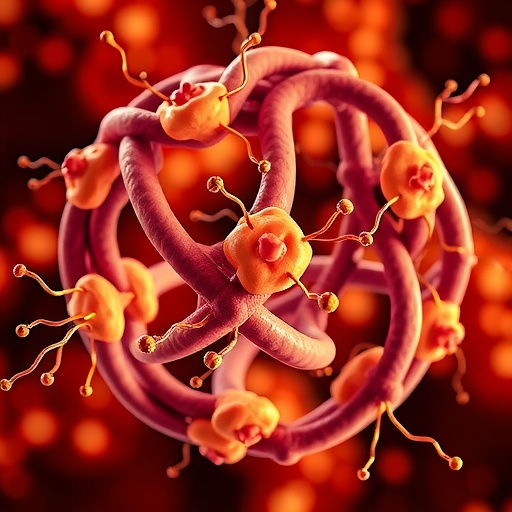
Credit: ATS
April 03, 2020– In a new study, researchers identified the most common characteristics of 85 COVID-19 patients who died in Wuhan, China in the early stages of the coronavirus pandemic. The study reports on commonalities of the largest group of coronavirus patient deaths to be studied to date. The paper was published online in the American Thoracic Society’s American Journal of Respiratory and Critical Care Medicine.
In “Clinical Features of 85 Fatal Cases of COVID-19 From Wuhan: A Retrospective Observational Study,” researchers from China and the United States report on an analysis of the electronic health records of patients with COVID-19 who died despite treatment at two hospitals in Wuhan: Hanan Hospital and Wuhan Union Hospital between Jan. 9 and Feb. 15, 2020. Wuhan, in China’s Hubei Province, was the epicenter of the COVID-19 outbreak.
“The greatest number of deaths in our cohort were in males over 50 with non-communicable chronic diseases,” stated the authors. “We hope that this study conveys the seriousness of COVID-19 and emphasizes the risk groups of males over 50 with chronic comorbid conditions including hypertension (high blood pressure), coronary heart disease and diabetes.”
The researchers examined the medical records of 85 patients who had died, and recorded information on their medical histories, exposures to coronavirus, additional chronic diseases they had (comorbidities), symptoms, laboratory findings, CT scan results and clinical management. Statistical analyses were then done.
The median age of these patients was 65.8, and 72.9 percent were men. Their most common symptoms were fever, shortness of breath (dyspnea) and fatigue.
Hypertension, diabetes and coronary heart disease were the most common comorbidities. A little over 80 0 percent of patients had very low counts of eosinophils (cells that are reduced in severe respiratory infections) on admission. Complications included respiratory failure, shock, acute respiratory distress syndrome (ARDS) and cardiac arrhythmia, among others. Most patients received antibiotics, antivirals and glucocorticoids (types of steroids). Some were given intravenous immunoglobulin or interferon alpha-2b.
The researchers noted: “The effectiveness of medications such as antivirals or immunosuppressive agents against COVID-19 is not completely known. Perhaps our most significant observation is that while respiratory symptoms may not develop until a week after presentation, once they do there can be a rapid decline, as indicated by the short duration between time of admission and death (6.35 days on average) in our study.”
Based on their findings, eosinophilopenia – abnormally low levels of eosinophils in the blood – may indicate a poor prognosis. The scientists also noted that the early onset of shortness of breath may be used as an observational symptom for COVID-19 symptoms. In addition, they noted that a combination of antimicrobial drugs (antivirals, antibiotics) did not significantly help these patients. The majority of patients studied died from multiple organ failure.
“Our study, which investigated patients from Wuhan, China who died in the early phases of this pandemic, identified certain characteristics. As the disease has spread to other regions, the observations from these areas may be the same, or different. Genetics may play a role in the response to the infection, and the course of the pandemic may change as the virus mutates as well. Since this is a new pandemic that is constantly shifting, we think the medical community needs to keep an open mind as more and more studies are conducted.”
###
The study authors are affiliated with a number of medical centers and departments of the Chinese PLA General Hospital; Wuhan Union Hospital; Renmin Hospital of Wuhan University; China’s National Clinical Research Center for Geriatric Diseases; Wuhan Hannan Hospital; Tongji Medical College, Huazhong University of Science & Technology; Joe DiMaggio Children’s Hospital, Hollywood, FL; and University of California, Davis.
About the American Journal of Respiratory and Critical Care Medicine
The AJRCCM is a peer-reviewed journal published by the American Thoracic Society. The Journal takes pride in publishing the most innovative science and the highest quality reviews, practice guidelines and statements in pulmonary, critical care and sleep medicine. With an impact factor of 16.494, it is one of the highest ranked journals in pulmonology. Editor: Jadwiga Wedzicha, MD, professor of respiratory medicine at the National Heart and Lung Institute (Royal Brompton Campus), Imperial College London, UK.
About the American Thoracic Society
Founded in 1905, the American Thoracic Society is the world’s leading medical association dedicated to advancing pulmonary, critical care and sleep medicine. The Society’s 15,000 members prevent and fight respiratory disease around the globe through research, education, patient care and advocacy. The ATS publishes three journals, the American Journal of Respiratory and Critical Care Medicine, the American Journal of Respiratory Cell and Molecular Biology and the Annals of the American Thoracic Society.
Media Contact
Dacia Morris
[email protected]
Related Journal Article
http://dx.





